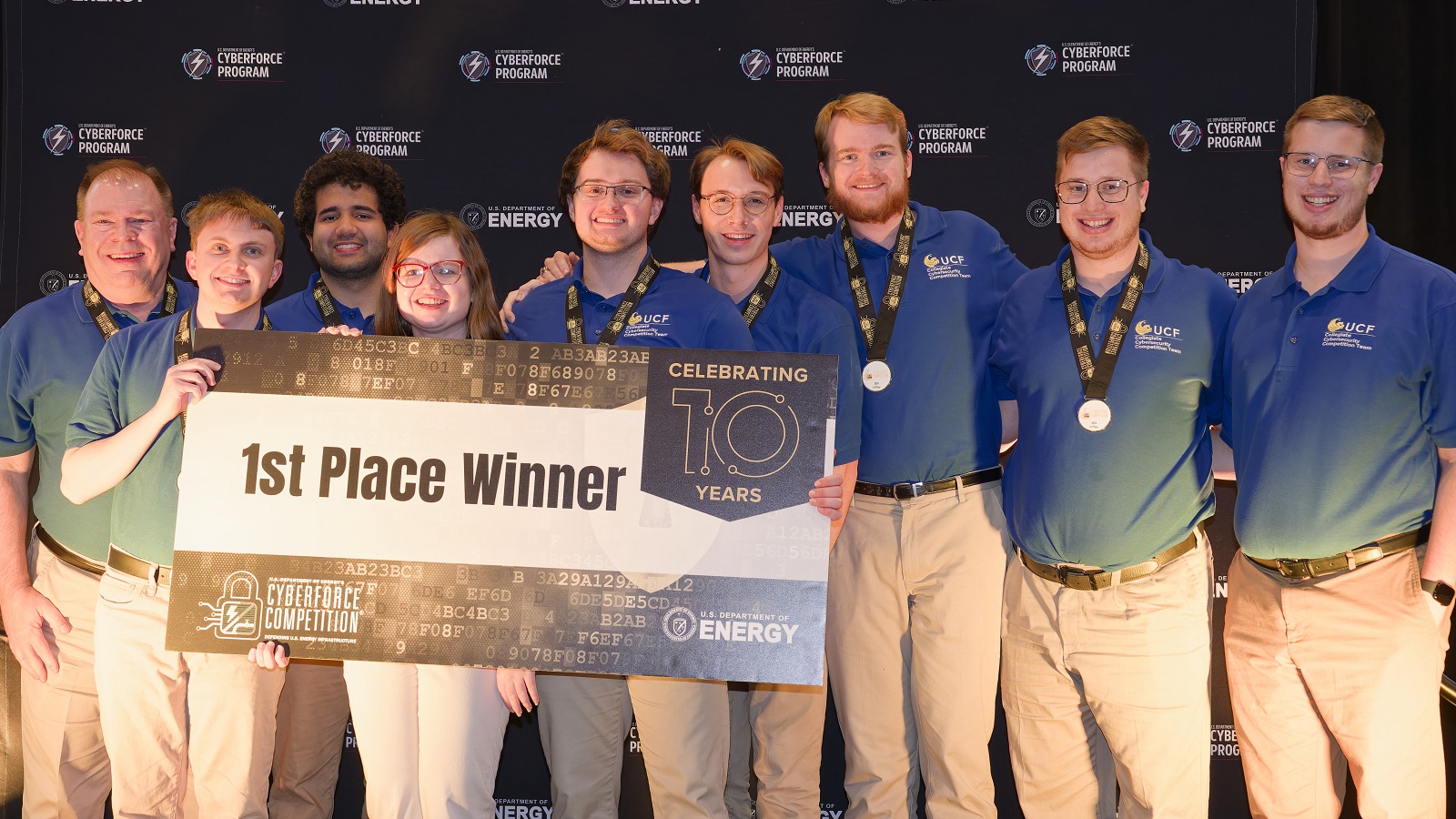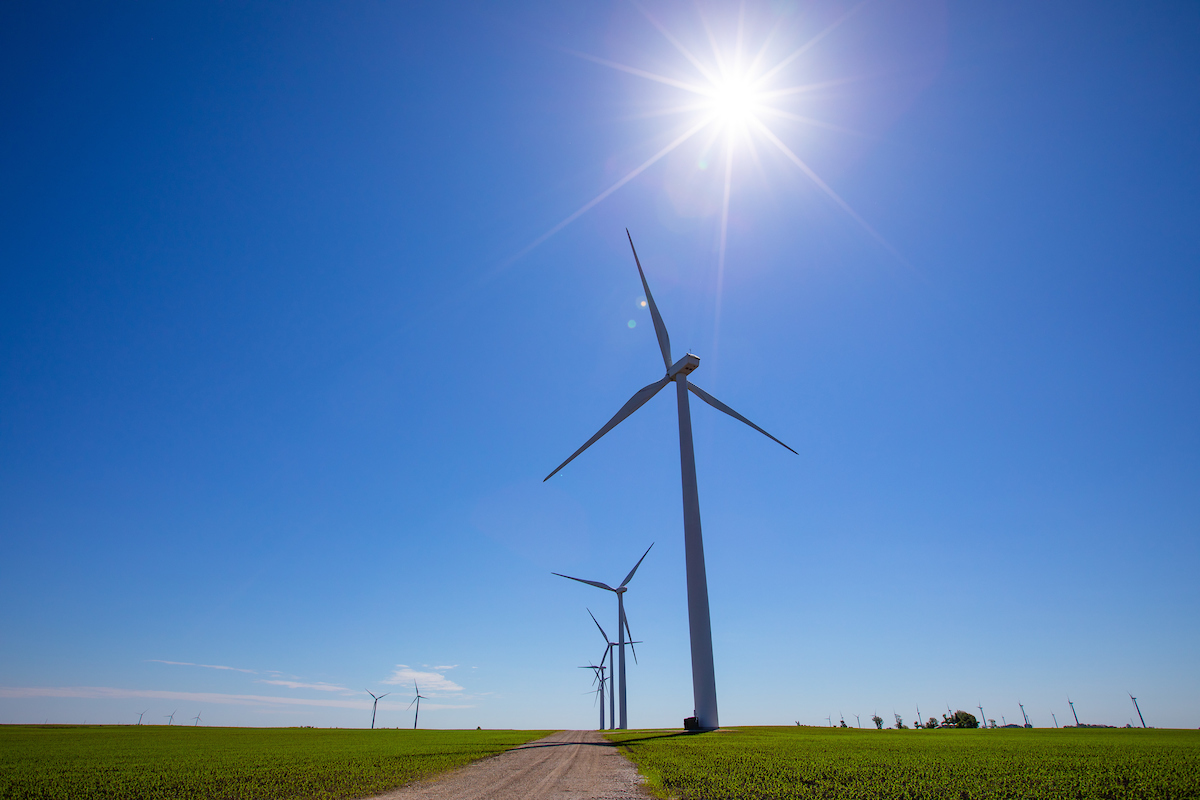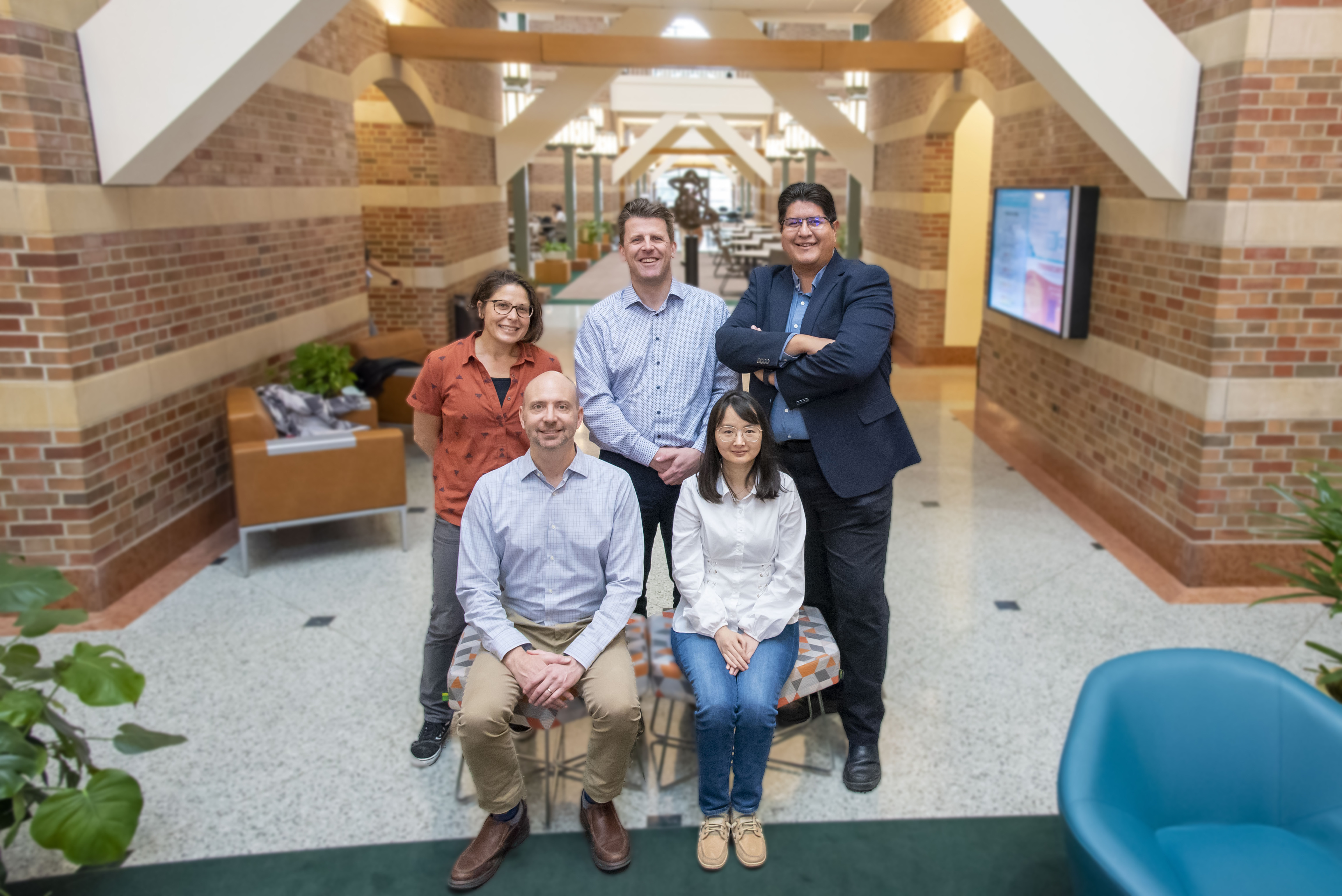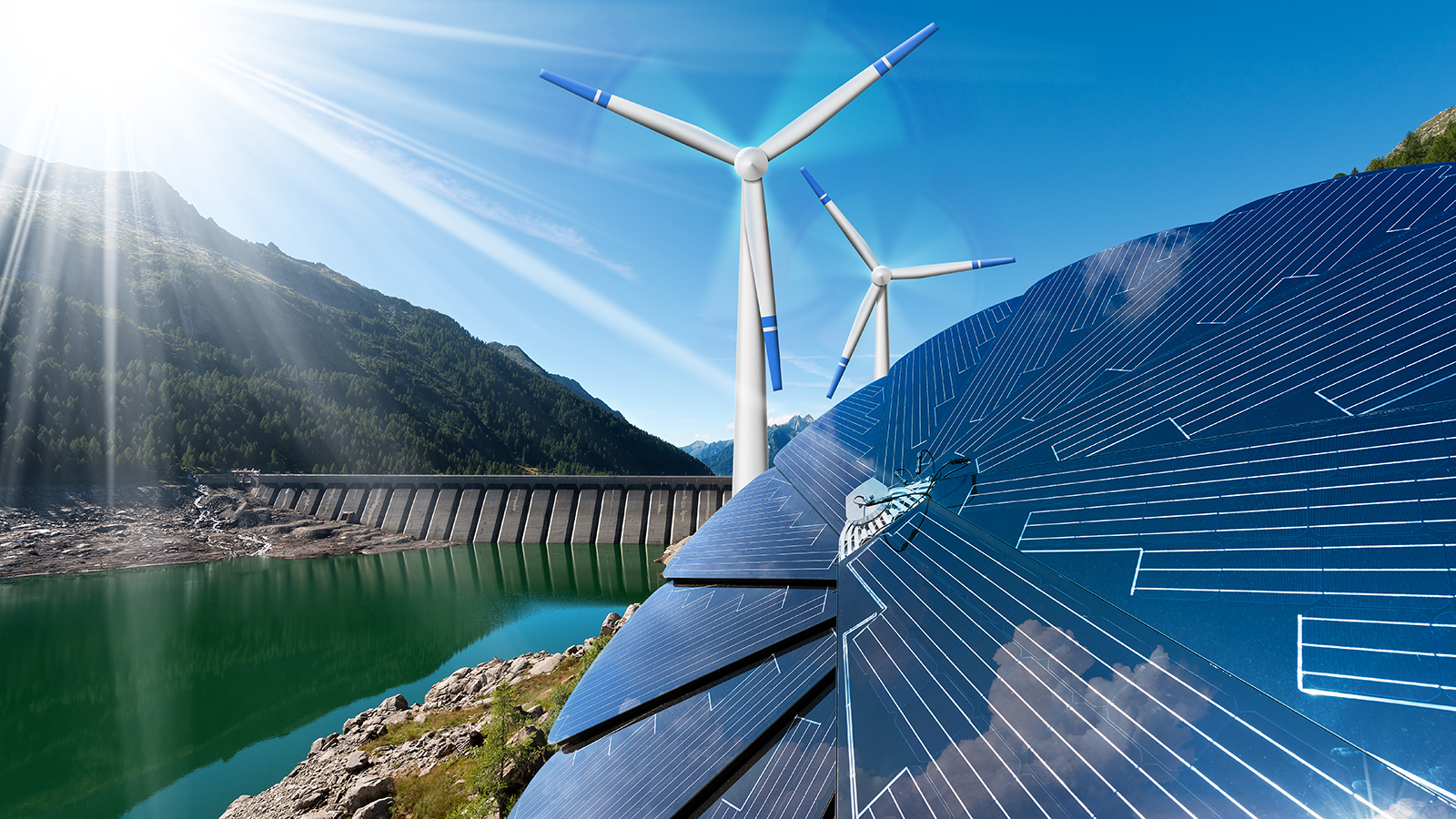University of Central Florida’s A Team with A Dream wins the 2024 CyberForce Competition®. The mission of the competition is to equip the next generation of cybersecurity professionals with hands-on experience defending critical infrastructure.

news, journals and articles from all over the world.

University of Central Florida’s A Team with A Dream wins the 2024 CyberForce Competition®. The mission of the competition is to equip the next generation of cybersecurity professionals with hands-on experience defending critical infrastructure.
Utility-scale batteries can revolutionize how we harness renewable power. Coupled with wind and solar, these batteries could increase the reliability of green energy by storing excess energy during times of high generation and low demand. Then, utilities can tap the stored energy when demand increases.
Two Department of Energy (DOE) offices have funded $6 million in research projects for an inaugural partnership to better prepare the nation for multiple disruptive power events and enable rapid response in a crisis for U.S. grid operators.
Abstract To assess the impact of air density on future wind resources under representative concentration pathway (RCP) scenarios (RCP2.6, RCP4.5, and RCP8.5), the Coordinated Regional Downscaling Experiment-East Asia project was utilized to simulate the future air density characteristics of China…
Abstract Battery energy storage systems (BESS) have emerged as a solution for mitigating the intermittent nature of solar and wind power with the rise of renewable energy. The application of BESS is essential in integrating large-scale renewable energy. Despite the…
Abstract Urban wind power is an appealing alternative for electricity supply. Comprehensive urban wind resource assessment is a prerequisite for cost-efficient deployment of wind turbines. Based on observations from multiple instruments, including a Doppler lidar (light detection and ranging) system, a…
Abstract Urban wind power is an appealing alternative for electricity supply. Comprehensive urban wind resource assessment is a prerequisite for cost-efficient deployment of wind turbines. Based on observations from multiple instruments, including a Doppler lidar (light detection and ranging) system, a…
Interactions between wind turbines could reduce power output by 30% in proposed offshore wind farm areas along the East Coast, new research has found. In all, the farms could still meet 60% of the electricity demand of New England.

The U.S. Department of Energy is awarding researchers a $2.5 million grant to establish a cybersecurity center based at Iowa State University. The center will develop technology to protect power grids from cyberattacks and strengthen the grid industry’s security workforce.
A recent study introduces a novel methodology for evaluating the economic viability and competitive edge of onshore wind energy against traditional power sources. This approach underscores the potential of wind power to reach grid parity, where its cost becomes comparable or lower than conventional electricity sources. The research marks a significant step in understanding the dynamics of renewable energy markets and highlights the role of wind power in China’s ambitious environmental goals.
On a research cruise focused on marine mammals and seabirds, Oregon State University scientists earned an unexpected bonus: The first-ever documented sighting of a hoary bat flying over the open ocean.
To become carbon neutral by 2060, as mandated by President Xi Jinping, China will have to build eight to 10 times more wind and solar power installations than currently exist in the country. Reaching carbon neutrality will also require major construction of transmission lines.
Navid Shirzadi uses deep learning models that hybridize existing forecasting models

Researchers at the Beckman Institute will conduct electrochemical reactions in microdroplets to produce clean hydrogen, sequester carbon dioxide, and store renewable energies like wind and solar inexpensively and sustainably. Their project, called DROPLETS, received $4.5 million from the U.S. Department of Energy’s Office of Science through its Energy Earthshots Initiative.

Ninety-seven percent of U.S. dams don’t make electricity. A new tool could help tap that resource.
Integrating nuclear power into broader energy systems, including renewable energy sources and heat-intensive industries, could improve flexibility and unlock revenue streams for nuclear power producers.
Regional wind data from around the U.S. helps improve a national weather forecasting model, which allows utility companies better plan for windy days
Tulane University’s Eric Smith, associate director of the Tulane Energy Institute at the A.B. Freeman School of Business and expert on energy markets, including the oil and gas industry and renewable segments, is available to comment on the benefits to Louisiana…
Iowa State’s Electric Power Research Center is helping industry study ways to add renewables to the power grid as the country makes plans to electrify the economy.
New research published in Nature Communications develops a bottom-up model to test the capabilities of the grid to accommode renewable power variability and to design the optimal investment plans for offshore wind power.
About 12% of the total global energy demand comes from heating and cooling homes and businesses. A new study suggests that using underground water to maintain comfortable temperatures could reduce consumption of natural gas and electricity in this sector by 40% in the U.S. The approach, called aquifer thermal energy storage (ATES), could also help prevent blackouts caused by high power demand during extreme weather events.
Media Briefing Schedule for ACS Fall 2022
Wind power is becoming popular, but disposing of huge turbine blades is a problem. Today, scientists report a composite resin for making these behemoths that could be recycled into new blades or many other products, including gummy bears. They will present their results at ACS Fall 2022.
Wind technology is growing—literally. Today’s offshore wind turbines can tower more than 490 feet above ground, their spinning blades churning out up to 8 megawatts (MW) each—about enough to power 4000 homes in the U.S.

When electric grids go down, there’s no way to restore them — “blackstart” them — with power from wind turbines. Iowa State’s Hugo Villegas Pico is leading a team that’s working to develop strategies and controllers that would reenergize power grids dominated by wind power.
Renewable energy sources now represent 20% of the electricity generated in America. The proposed infrastructure bill seeks to expand renewables, but doesn’t outline how it will happen.
Wind power has experienced fast growth within China during the past decade, but many wind farms are being built within regions of high seismic activity. In Journal of Renewable and Sustainable Energy, researchers present their work exploring the dynamic behaviors of wind turbines subjected to combined wind-earthquake loading. The group discovered that changes in the wind increase and decrease the response amplitude of the wind turbine under weak and strong earthquakes, respectively.
In the Journal of Renewable and Sustainable Energy, researchers describe a real-time method for potentially helping turbine farms realize additional power from the clustering of their turbines. Their method requires no new sensors to identify which turbines at any given time could increase power production if yaw control is applied, and validation studies showed an increase of 1%-3% in overall power gain.
For wind farms, it is important to control upstream turbines in an efficient manner so downstream turbines are not adversely affected by upstream wake effects. In the Journal of Renewable and Sustainable Energy, researchers show that by designing controllers based on viewing the wind farm system as a coupled network, it is possible to extract power more efficiently.
Argonne scientists led four other laboratories in developing definitive guidance on how to value pumped storage hydropower projects. Their efforts resulted in DOE publication of the Pumped Storage Hydropower Valuation Guidebook: A Cost-Benefit and Decision Analysis Valuation Framework. The guide provides an objective, transparent valuation methodology and helps measure both monetary and non-monetary value streams.
Biodiversity Research Institute announces the formation of its new environmental consulting services division—BRI Environmental offering a full suite of services for evaluating and permitting renewable energy development projects, infrastructure projects, marine installations, as well as residential and commercial development.
Americans used approximately 7 percent less energy in 2020, due in part to the COVID-19 pandemic, according to energy flow charts released by Lawrence Livermore National Laboratory (LLNL).

Researchers collaborated to create a software program to accelerate discovery and design of new materials for applications allowing for a far more comprehensive understanding of materials from atomistic to mesoscopic scale than ever before.

Distributed energy resources use electronics to communicate with each other or with a control center. Yet this presents opportunities for cyber attacks that could become real threats to the electric power system. Argonne experts are developing ways to protect power systems from these threats before they can occur.
Cornell and Northwestern University engineers, along with a federal economist, have created an energy model that helps to remove carbon-generated power from the U.S. electric grid – replacing it with a greener, financially feasible wind, solar and hydro energy system.